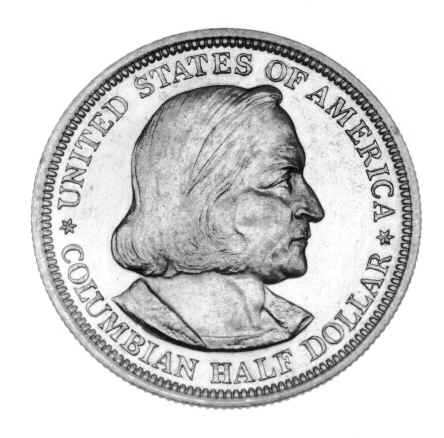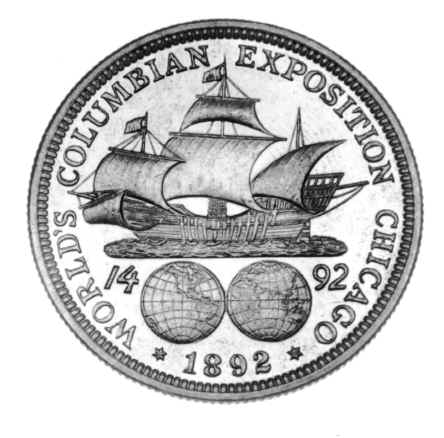

The Columbus Half Dollar
The FIRST Commemorative Coin of the United States of America
A new era of confidence
|
Chicago in the late 19th century---without elevators buildings could only rise five or six stories---with them, the sky was the limit |
As the 19th century was coming to a close, the United States was undergoing an amazing transformation. The nation was finally recovering from the devastation of the Civil War, and farms and industry were undergoing a rapid process of mechanization, which vastly increased productivity---and created wealth. In the cities, the new wonder of electricity was beginning to transform daily life---but it might not have happened the way it did if not for the Columbian Exposition held in Chicago in 1893. |
All over America the country was under construction. Soon, skyscrapers would begin to transform the skylines of American cities---but skyscrapers need elevators, and elevators wouldn't be mass produced until the country could decide which system of electricity---direct current or alternating current---would be used in the US.
A celebration of progress
|
1892 would mark the 400th year since Columbus discovered America |
In 1876 the nation had celebrated it's Centennial by holding a
vast Exposition---A World's Fair---in Philadelphia. This Fair had been tremendously
successful, and near the turn of the decade of the 1890's another important milestone was
approaching---the 400th anniversary of the discovery of America by Christopher Columbus. A commemoration of a bold quest It was decided that another World's Fair would be an appropriate commemoration of this historic event, and organizers in Chicago rose to the challenge and planned a huge World's Fair to be built along the shores of Lake Michigan. In a very short period of time a vast complex arose on the Fairground site. |
 |
A Panorama of the Fairgrounds on the shores of Lake Michigan (photo---Library of Congress) |
Many nations from around the world participated by building pavilions---and Spain even built replicas of the ships in the Columbus Fleet and sailed them to Chicago!
|
The Spanish Caravelle Santa Maria (photo--Library of Congress) |
The proof of the pudding The Chicago World's Fair also settled a dispute of immense interest to the world's future---whether direct current electricity (promoted by Thomas Edison)---or alternating current electricity (supported by George Westinghouse)--would be the standard adopted by the nation. To prove the superiority of alternating current, Westinghouse vowed to light the entire fairgrounds with it, and he built huge dynamos to get the job done. |
 The obverse of the Columbus Half Dollar |
 The reverse of the Columbus half Dollar |
It wasn't really known at the time whether or not such special coins would be a hit or a flop with the public---it just had never been done before. But the Columbus Half Dollar had one thing going for it---the same year it was produced, the Mint had changed the designs on all the regular circulating silver coins below a dollar---so the public was already accustomed to seeing new coins in their hands.
When it was released, the Columbus Half Dollar was an immediate success---the very first US commemorative coins quickly became popular with the public. Many were saved by collectors, but many actually entered circulation---passing through the hands of Americans in the 1890's and beyond.
Another Anniversary
1992 was the 500th anniversary of the discovery of America by Columbus, and the Centennial of the Columbian Exposition---as well as the 100th anniversary of the nation's first commemorative coin. At that time, collector interest in the Columbus Half Dollar was intense, and the coins became difficult to locate in any condition. The buying frenzy swirled on for over a year. We had rarely seen such intense interest in any coin. Many collectors were successful in obtaining an example of this elusive coin, but many more were unable to get their hands on a Columbus Half Dollar.
Today, there is no way to determine just how many of the first commemorative coins of the United States of America changed hands in 1992, but one thing is certain---many of the coins that were sold that anniversary year ended up in the hands of serious collectors, where they remain to this day---and they are unlikely to be available for sale anytime soon.
© 1998 CollectSource